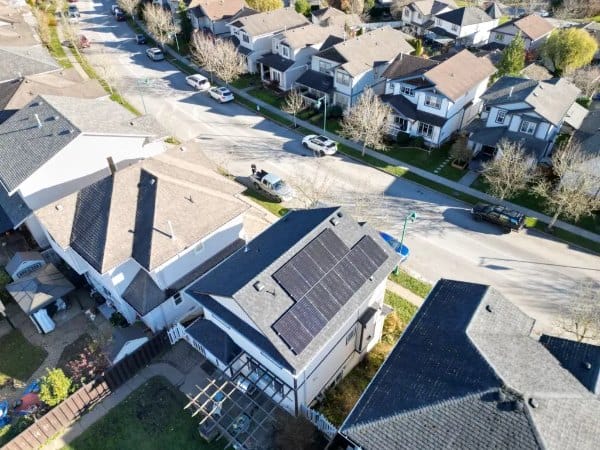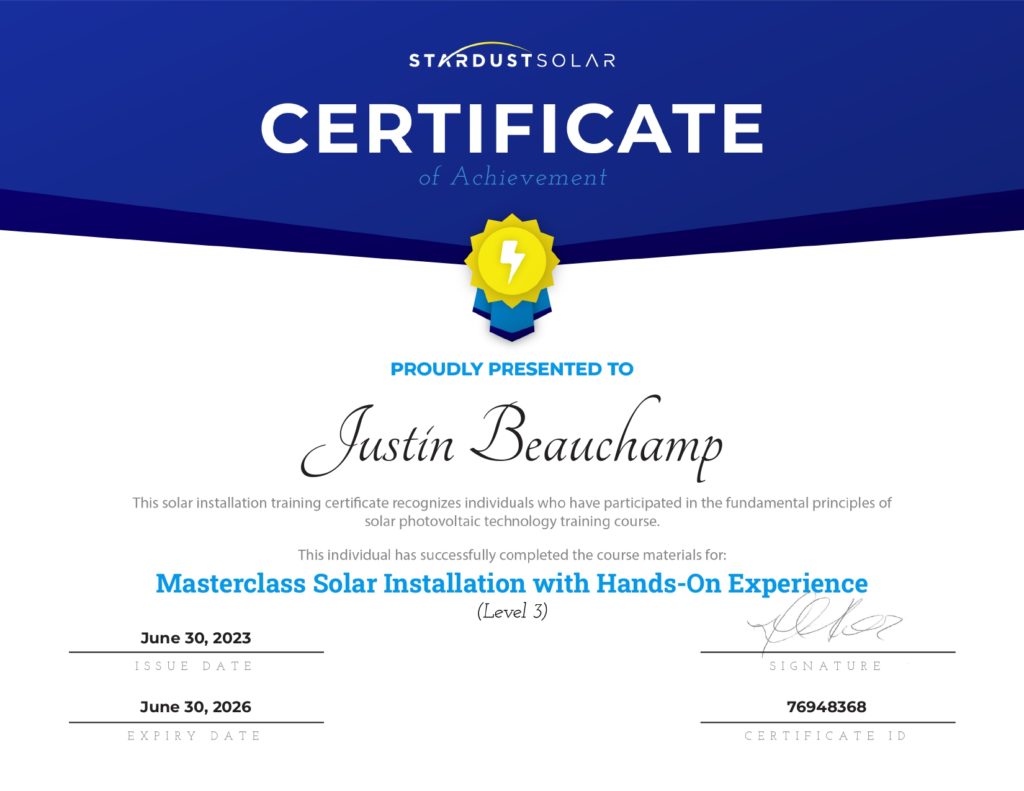Solar energy rises as a sustainable and eco-friendly alternative to conventional power sources. However, concerns have been raised about the durability of solar panels, particularly in the face of extreme weather conditions such as heat waves.
This blog explores the impact of heatwaves on solar panels and delves into insights provided by solar energy contractors regarding the reliability of solar panels.
Effects of Heat on Solar Panels
Solar panels convert sunlight into electricity, a process known as photovoltaic (PV). These are composed of multiple solar cells, typically made of silicon, which generate direct current (DC) electricity when exposed to sunlight. An inverter converts the electrical output into usable alternating current (AC).
While solar panels thrive on sunlight, excessive heat can affect their performance and longevity. The key components vulnerable to heat stress include:
Solar Cells
High temperatures can cause solar cells to degrade over time. Thus reducing their efficiency in converting sunlight into electricity.
Inverter
The inverter, responsible for converting DC electricity to AC, may experience efficiency losses in extreme heat.
Wiring and Connectors
Excessive heat can lead to thermal expansion, potentially loosening connections and affecting wiring integrity.
Impact of Extreme Heat on Solar Panels
Reduced Efficiency
When it gets really hot during heatwaves, solar panels don’t work as well. These panels are supposed to turn sunlight into electricity, but high temperatures can mess with that process. This drop in efficiency makes it tough for solar energy systems to work at their best.
Thermal Degradation
Staying in extreme heat for a long time can harm solar panels. This is called thermal degradation, where the materials inside the panels start to break down. This breakdown doesn’t just make the panels produce less power; it can also physically damage important parts of the panel. This double impact worsens the panel’s overall condition, affecting how long it can keep working.
Potential for Hot Spots
More heat can create hot spots on the surface of solar panels. Hot spots are areas that get too hot and can’t be fixed. These spots hurt the affected areas and can spread to nearby parts of the panel. This kind of damage threatens the structure of the solar panel.
Accelerated Aging
One big problem with heat waves and solar panels is that the panels may age faster. Being in the heat for a long time speeds up the wearing out of the materials and parts of the panels. This faster aging doesn’t just make the panels less efficient but also means they won’t last as long as they should.
This has consequences for how well the panels work and the cost, as repairs and replacements might be needed sooner than expected.
Mitigating Heat-Related Risks
Optimal Placement and Orientation
Contractors stress the significance of proper panel placement and orientation to mitigate the impact of heat. Installing solar panels with sufficient spacing allows for better air circulation. This helps dissipate heat and prevent localized temperature build-ups.
Cooling Technologies
Innovative cooling technologies are being integrated into solar panel systems to counteract the effects of heat. Some systems incorporate active cooling methods, such as water or air circulation, to maintain lower operating temperatures and enhance overall efficiency.
Shade Structures and Reflective Surfaces
Top solar companies recommend using shade structures or reflective surfaces to minimize heat absorption. Strategic placement of reflective materials or the incorporation of shading devices can help regulate temperature and optimize energy production.
Comparing Solar Panel Technologies: Which Types Fare Better in Heat?
Take a look at the comparative analysis of solar panel technologies in high temperatures:
| Solar Panel Technology | Advantages in High Temperatures | Considerations |
| Monocrystalline | Higher efficiency and better performance | Good performance in high temperatures |
| Polycrystalline | Generally higher cost | Moderate efficiency |
| Thin-film (CIGS, CdTe) | Better temperature coefficient | Lower efficiency, and larger footprint |
Monocrystalline Panels
Monocrystalline panels are preferred in high-temperature environments because they perform better under stress. While they tend to be more expensive, their durability and efficiency make them reliable for regions prone to heatwaves.
Polycrystalline Panels
Polycrystalline panels offer a great balance between efficiency and cost. They exhibit good performance in high temperatures. They are also popular for solar installations in diverse climates. However, their efficiency may be slightly lower compared to monocrystalline panels.
Thin-Film Panels (CIGS, CdTe)
Thin-film technologies like Copper Indium Gallium Selenide (CIGS) and Cadmium Telluride (CdTe) have better temperature coefficients than crystalline silicon panels. However, their lower efficiency and larger footprint may limit their suitability for certain applications.
Innovations in Solar Panel Technology
Solar panel manufacturers and researchers are actively exploring solutions to adapt solar panel technology for extreme heatwaves.
Advanced Cooling Systems
To combat extreme heat, solar panels now incorporate advanced cooling systems. These innovative techniques, such as water circulation or active ventilation, effectively dissipate excess heat, maintaining optimal operating temperatures. These technologies help sustain efficiency and extend the longevity of solar panels.
Heat-Resistant Materials
Manufacturers are turning to heat-resistant materials in solar panel construction. These materials withstand higher temperatures without degradation, ensuring continued efficient electricity generation. Advancements in protective coatings further shield panels from the harmful effects of extreme heat waves.
Improved Thermal Properties
Enhancing the thermal properties of solar panels is a key focus for researchers. Optimizing materials and designs to improve heat dissipation allows panels to resist overheating and prevent performance degradation. This may involve integrating advanced thermal barriers or heat-conducting materials into the panel structure.
Smart Monitoring and Maintenance
Intelligent monitoring and maintenance systems mitigate the impact of extreme heat waves on solar panels. Constant monitoring of panel temperatures allows for promptly identifying and resolving issues. Predictive maintenance optimizes panel performance by identifying potential problems before they occur.
Best Practices for Homeowners to Maintain Solar Panel Health in High Temperatures
Here are some tips for homeowners in heat-prone areas:
- Regular Cleaning: Dust and dirt can freely accumulate on solar panels, reducing efficiency. Regular cleaning, especially during heatwaves, helps maintain optimal performance.
- Professional Inspections: Schedule periodic inspections by solar professionals to identify and address any potential problems caused by heat stress.
- Shade Solutions: Explore shade structures or vegetation to provide additional protection from direct sunlight and reduce panel temperatures.
- Monitoring System Performance: Invest in monitoring systems that track the performance of solar panels. Sudden drops in efficiency can indicate potential issues that need attention.

Partner with a Reliable Solar Energy Contractor for a Secure Installation
While solar panels are tough, they can still be affected by hot weather. That’s where solar energy contractors come in—they ensure your solar panels are of good quality. Ready to start your solar installation project? Partner with MAG Solar for a secure and efficient installation.
Go solar today! MAG Solar’s expert solar panel installation team is here to power your future. Call us now.
Frequently Asked Questions
Can extreme heat impact alternative energy sources?
Yes. Extreme heat can significantly decrease the performance of solar panels. When it’s too hot, the efficiency of solar panels in generating power can drop by 10% to 25%.
Ideally, solar panels work best in temperatures between 15°C-35°C (59°F to 95°F), but they can reach temperatures as high as 65°C (149°F). Higher temperatures can lessen the efficiency of the solar cells. It happens that these are the components that convert sunlight into electricity.
How does extreme heat impact other energy sources?
Yes, extremely hot weather doesn’t just affect solar panels; it can also impact other energy sources. Nuclear and thermal plants, which turn heat into electricity, can be affected too. These plants, including those using coal, gas, or nuclear processes, require a lot of water for cooling.
How can the issue of hot solar Panels be addressed?
Yes, extremely hot weather doesn’t just affect solar panels; it can also impact other energy sources. Nuclear and thermal plants, which turn heat into electricity, can be affected too. These plants, including those using coal, gas, or nuclear processes, require a lot of water for cooling.
How can the issue of hot solar Panels be addressed?
Here are simple tips for cool solar panels:
Smart Design
When planning your solar panel system, installers think about how hot your roof gets. It’s an important factor to make sure your panels stay cool.
Lift them Up
Putting solar panels above your roof helps airflow around them, keeping them cool. It’s like giving them some space to breathe.
Light-Colored Panels
Choose solar panels that are light-coloured and reflective. This way, they won’t soak up too much heat, helping them stay cooler under the sun.
Shade for Components
The electronic parts that make your solar panels work can be tucked in a shaded spot behind the panels. This helps prevent them from getting too hot and keeps everything running smoothly.

